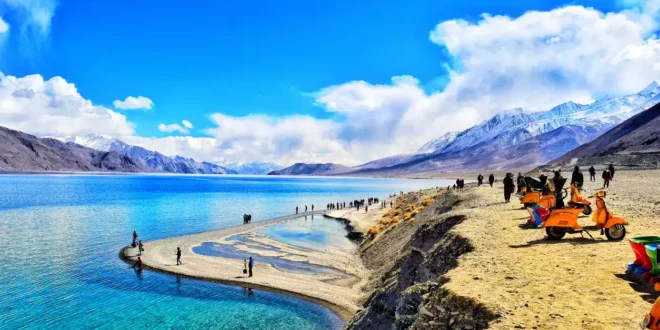Leh, Ladakh is an iconic travel destination in India known for its beautiful Himalayan Mountains, Tibetan Buddhist culture, and ancient monasteries. The region of Ladakh is a high-altitude desert, offering travelers stunning landscapes and unique experiences. To make the most of your journey, there are a few things to know before visiting Leh. Let’s dive into the details.
1. Location
This is a district in the northern part of India’s Jammu and Kashmir state. It is bounded by the Tibetan Autonomous Region to the east, Himachal Pradesh to the south, Pakistan’s Northern Areas to the west, and Aksai Chin and Chinese-administered Ladakh to the northeast. Leh is located at an altitude of 3,500 meters (11,500 feet) above sea level and is one of the largest districts in India. It covers an area of nearly 45,110 sq km (17,313 sq mi).
The area is crisscrossed by several mountain ranges including Zanskar, Ladakh, Nubra Valley, and Markha Valley. The highest peak in this region is Stok Kangri (6153 m/20202 ft) which lies just 25 km from Leh. The Indus flows southeast through Ladakh towards its junction with the Zanskar River near Nimo in Baltistan before flowing into Pakistan’s Northern Areas beyond. This region receives very limited rainfall but has a number of cold desert streams that flow south from their high-altitude sources.
2. Transportation
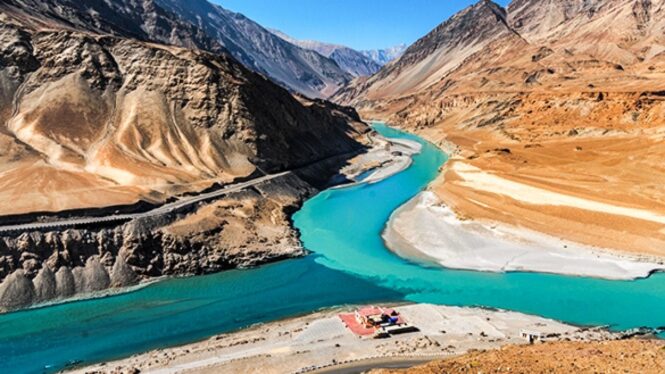
Navigating the roads of Leh, Ladakh can be a daunting prospect for those unfamiliar with the local landscape. Luckily, there are a variety of transportation options available to get you to your destination, like Leh-Ladakh Taxi Driver
The only airport near Leh is Kushok Bakula Rimpochee Airport (IXL), which has a limited range of domestic carriers offering flights to and from big cities like Delhi, Chandigarh, Mumbai, and Jammu. If you’re coming from abroad to Leh there are many connecting flights to Delhi that you can take as well as charter flights depending on your needs. Charter flight operators are also available, but it is important that you book at least two weeks in advance for this form of transport to Leh.
One of the most scenic and adventuresome journeys in India is from Manali to Leh which involves a difficult terrain of high mountain passes, but with some breathtaking views. The road connects Manali with Keylong and Leh, winding over three mountain passes – Rohtang Pass (3,978 m / 13,051 ft), Baralacha La pass (4,890 m / 16,040 ft) and Tanglang La (5,325 m / 17,479 ft). The trip takes you through alpine meadows and barren landscape with intermittent lush greenery in between stops.
If you plan to take a train to get to Leh, Ladakh, there are only a few options. The nearest railway station is in Jammu Tawi, connecting with most major cities in the country such as Delhi, Amritsar, Kolkata, and Mumbai. However, it is almost 650 km from Jammu-Tawi to Leh by road. You will also have to take a bus or taxi from outside the station until Natpur Tekan/Banihal and onwards for Udhampur, Kashmir Cycle Ride, and Kargil.
3. Major Attractions
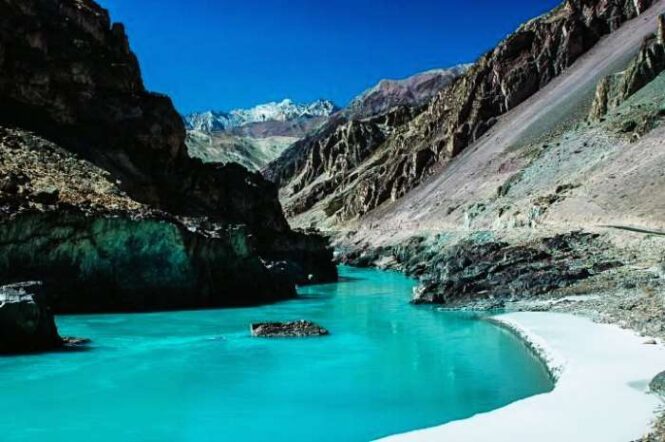
Visitors to this northern region are blessed with a unique culture and amazing natural beauty. Here are just some of the major attractions that attract tourists to Leh and Ladakh each year.
Monasteries
For those looking to explore the area’s rich Buddhist history, there are many gorgeous monasteries scattered around Leh and Ladakh. Among the most famous is Thiksey Monastery which is perched on top of a hill and dates back to the 12th century. Hemis Monastery is another worthwhile trip for visitors as it is one of the most important Buddhist Learning Centers in all of Ladakh.
Pangong Lake
One of the biggest draws in this part of India is Pangong Lake, located east of Leh in an area along disputed borders between India and China. This glacial lake offers an unreal landscape between deep blue waters and breathtaking desert mountains – making it an ideal spot for photographers, campers, hikers, and anyone looking for an escape into nature.
Tsomoriri Lake
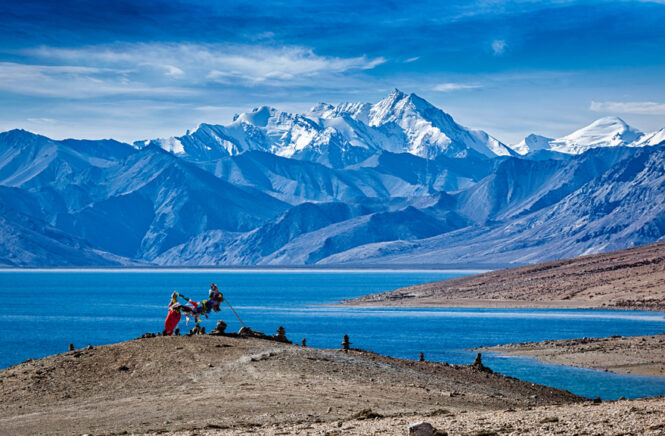
Right next door to Pangong lake lies Tsomoriri lake – a larger but less visited lake surrounded by majestic mountains covered with snow even during peak summer months! Trekkers come here hoping to experience some of the best views possible in all of India’s high mountain passes! It’s also a great spot for bird lovers as it is home to thousands of species like Bar-headed Goose, Black Necked Crane, Tibetan Snow finch, etc.
Nubra Valley
Located at an altitude of over 11000ft, The Nubra valley stretches between the Karakoram mountain range at one end and Joins River Shyok at another end. The road from Leh down south cuts through incredible landscapes, and forbidden military zones & finally reaches Nubra. The Valley boasts crystal clear lakes like Tso Moriri & disc-shaped moon land dunes, Adventure seekers come here for sand dune safaris & activities like trekking/biking!
4. Accommodation
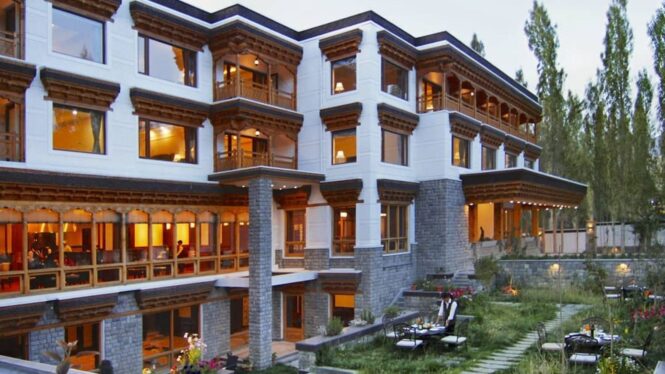
Accommodations vary greatly in Ladakh, ranging from moderate and inexpensive guesthouses to large resorts with plenty of facilities. Many hotels have restaurants or small cafes associated with them, providing breakfast or dinner buffets, tasty snack options, and evening entertainment. Popular hotspots in the region include The Grand Dragon (a five-star luxury resort), Hotel Yak (a modern hotel ideal for business travelers), and Cowshed Hotel (a budget option offering excellent value for money).
In contrast to a hotel, homestays are accommodations that are located in someone’s home. They give travelers an opportunity to experience local culture and cuisines while staying at a low cost in the comfort of someone’s home. It may offer access to local businesses, cultural activities, and landmarks that would otherwise be inaccessible or difficult to arrange. Some homestays even provide home-cooked meals and use of traditional cooking utensils or appliances.
Camps are a great option for travelers looking for a more immersive experience of the local culture and nature. In Leh, there are several campsites around the area providing you with comfortable tents with beds, attached bathrooms with basic amenities, and a kitchen to cook delicious meals that can be enjoyed in the open air. Many camps also offer activities such as horse riding, safari tours, rafting in the Zanskar river, photography trips, and guided treks to help you make the most of your stay.
5. Weather
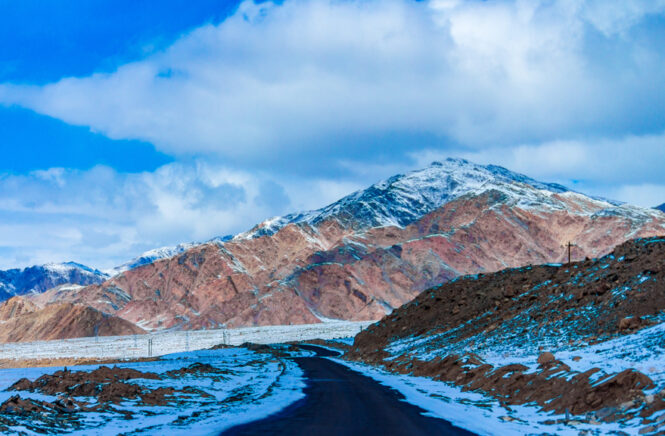
Leh is situated high up in the mountains so the temperatures can dip low at night and snow is common in the winter months. You should also be prepared for strong winds and sudden storms, as the region is prone to drastic changes in weather. Knowing how to dress and what type of gear to pack will help you be prepared for any eventuality.
The average annual temperature of Leh ranges from -7 to 28 °C traversing through all four seasons.
The winter months (November to mid-March) are the coldest and temperatures often dip below zero during this period. During summer (April-September), the temperature pangs up to 23-28 °C with pleasant days and clear skies.
The best time to visit Leh, Ladakh is from May to September. This period is known for its pleasant temperatures and stunning views of the mountain ranges. During this time, travelers have the opportunity to participate in numerous activities such as trekking and river rafting without worrying about soaring temperatures or unexpected rainfall.
6. Safety
When it comes to safety, Leh is no different than any other tourist destination. Visitors should be aware of the potential risks associated with visiting this area and take the necessary precautions to ensure a safe and enjoyable trip. Safety is paramount when visiting Leh Ladakh, and it is important to take the necessary steps to ensure you are prepared for any situation. In this section, we will discuss safety and security through a variety of topics, including the local culture, transportation, and the environment.
Ensure that you stick to the main streets and avoid traveling alone late at night. It is recommended that tourists hire the services of a reliable travel agent if they are considering visiting isolated areas or trekking regions in and around Leh.
Carry your passport or a photocopy of your passport everywhere you go for identification purposes. It is also advisable to check with local authorities regarding the opening hours for banks or shops as these tend to change often in this region.
Conclusion
As can be seen, visiting Leh, Ladakh is worth the effort and reward. This secluded wonderland offers stunning landscapes and experiences that can’t be found anywhere else. From high mountain passes to sacred Buddhist monasteries, it is a fascinating place to explore.
 Imagup General Magazine 2024
Imagup General Magazine 2024
